Last updated on
Discover the art of concealing a pocket door seamlessly within your interior design. This is your guide through practical tips and tricks for a flawless finish.
Pocket doors are a great addition to any home. They save space and add a touch of elegance to your decor.
However, sometimes you may want to conceal them, especially when they clash with your interior design or when you need some privacy. Fortunately, several ways exist to hide pocket doors without compromising functionality or aesthetics.
This article explores creative ideas for hiding pocket doors that transform your living space into a stylish and functional haven. So whether you’re renovating your home or just looking for inspiration on concealing those pesky sliding doors, keep reading!
Key takeaways:
- Measure pocket door dimensions accurately for a perfect fit.
- Choose cover materials that blend with your interior design.
- Use paint or wallpaper to match pocket doors with surrounding walls.
- Install removable panels or curtains to hide pocket doors.
- Incorporate shelving or cabinetry for a functional and concealed look.
Table of Contents
Introduction to Pocket Doors

Pocket doors are sliding doors that disappear into the wall when opened. They have been around for centuries and were popular in Victorian homes, where they were used to separate formal living spaces.
Today, pocket doors are still widely used in modern homes because they save space and add a touch of elegance to any room.
One advantage of pocket doors is that they don’t take up valuable floor space like traditional hinged or swinging doors. This makes them ideal for small rooms or areas with limited clearance, such as closets, bathrooms, pantries or laundry rooms.
Another benefit is their versatility; if weatherproofed correctly, you can use them as an alternative to regular interior doors between two adjacent rooms or even as exterior patio sliders.
However, one downside is that the hardware can be tricky to install and maintain properly over time due to its concealed nature within walls.
Measuring Pocket Door Dimensions
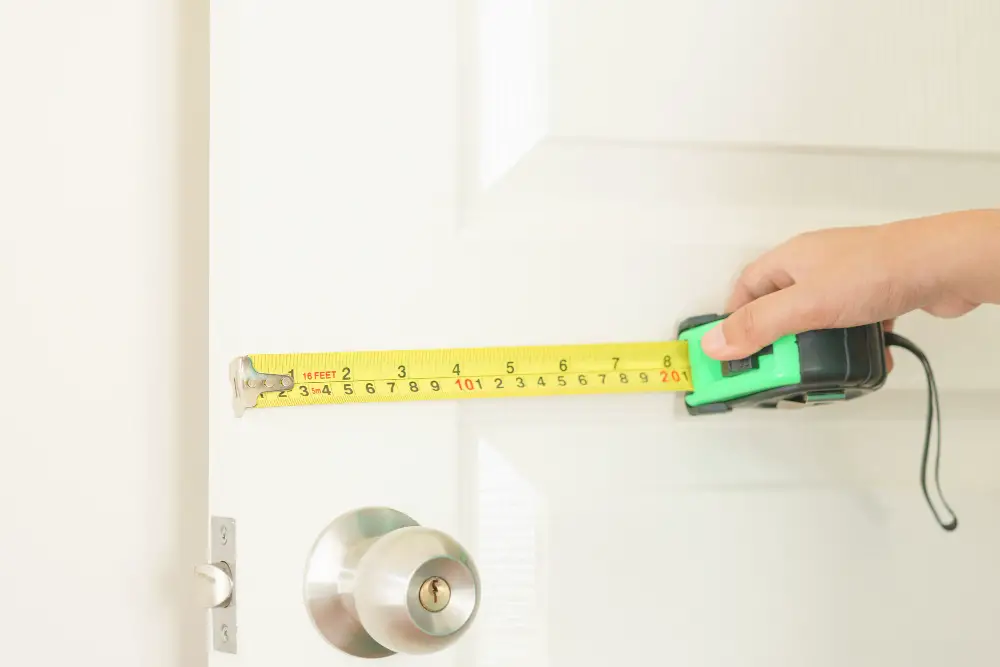
This step is crucial because the cover material or panel you choose must fit perfectly over the door without interfering with its operation. To measure your pocket door, open it first and note its width and height.
Then add an extra inch to each measurement for clearance purposes.
It’s also important to consider the thickness of your chosen cover material when measuring for a perfect fit. For instance, if you’re using a wooden panel as a cover-up option, ensure it doesn’t exceed 1/4 inch in thickness; otherwise, it may interfere with the sliding mechanism.
Choosing the Right Cover Material
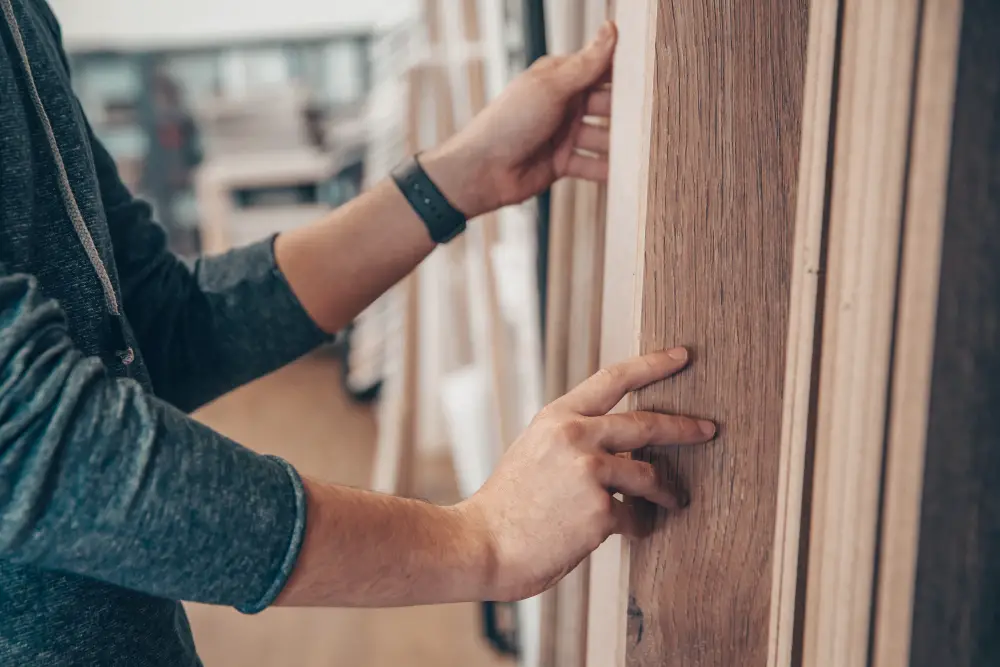
The cover material should blend seamlessly with your interior design and provide a durable finish that can withstand daily wear and tear. Some popular options for covering pocket doors include drywall, wood paneling, wallpaper, or paint.
Drywall is an excellent choice if you want to create a smooth surface that matches the surrounding walls. It’s easy to install and can be painted or wallpapered for added texture.
Wood panelling adds warmth and character to any room while providing a sturdy barrier against noise and drafts. Depending on your preference, you can choose from various types of wood finishes, such as oak, maple, or cherry.
Wallpaper offers endless possibilities for patterns, colors, and textures, making it perfect for adding visual interest in small spaces like bathrooms or closets where pocket doors are commonly used.
Paint provides an affordable option that allows you complete control over color selection while protecting against scratches and scuffs.
Paint and Wallpaper Options
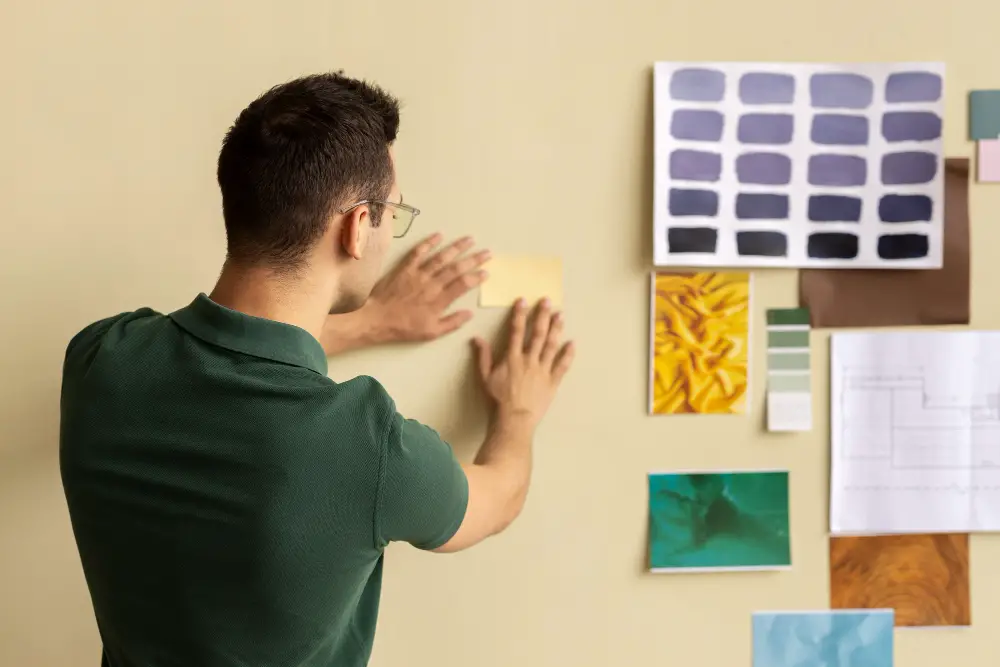
This technique works best with a solid-colored wall, allowing for seamless blending. You can use any paint or wallpaper that matches your existing decor, but choose one with a smooth finish.
Consider using stencils or decals on your pocket doors if you want something more creative than matching colors. These decorative elements can add personality and charm to an otherwise plain surface.
When selecting paint or wallpaper for your pocket doors, remember that they will be subjected to wear and tear over time. Choose high-quality materials that are durable enough to withstand frequent use without fading or peeling.
Installing Removable Panels

These panels can be made from various materials, such as wood, fabric, or wallpaper. They are attached to the wall using hinges and can be easily removed when you need access to your pocket door.
To install removable panels, measure the dimensions of your pocket door and cut out a panel that fits perfectly over it. Attach hinges on one side of the panel and screw them into place on either side of your doorway.
You can then decorate these panels with paint or wallpaper that matches your interior design theme for an added touch of style. When you want access to your sliding doors again, remove the hinge pins and lift each panel off.
Concealing With Curtains

You can choose from fabrics, patterns, and colors that complement your existing design scheme or create an eye-catching contrast. Curtains also offer the flexibility of opening or closing the door as needed without removing any panels.
To conceal pocket doors with curtains effectively:
- Measure the width and height of your door frame accurately.
- Choose curtains that are slightly wider than the frame for full coverage.
- Install curtain rods above and on both sides of the door frame.
- Hang curtains using rings or hooks for easy sliding back-and-forth movement.
You can opt for sheer curtains if you want natural light penetration while maintaining privacy or go for blackout drapes if you prefer complete darkness in certain areas like bedrooms or media rooms.
Incorporating Shelving or Cabinetry

This option not only conceals the door but also adds extra storage space to your room. You can install shelves on either side of the doorway to display decorative items such as books, vases, and picture frames.
Alternatively, you can opt for custom-built cabinets that blend seamlessly with your existing decor. These cabinets can be designed with sliding doors that match the color and texture of your walls so they appear invisible when closed.
When choosing this option, it’s important to ensure enough clearance between the cabinet/shelf and the pocket door so it doesn’t interfere with its operation. Also, make sure that any hardware used in constructing these features does not obstruct movement of the sliding door.
Blending With Wall Texture
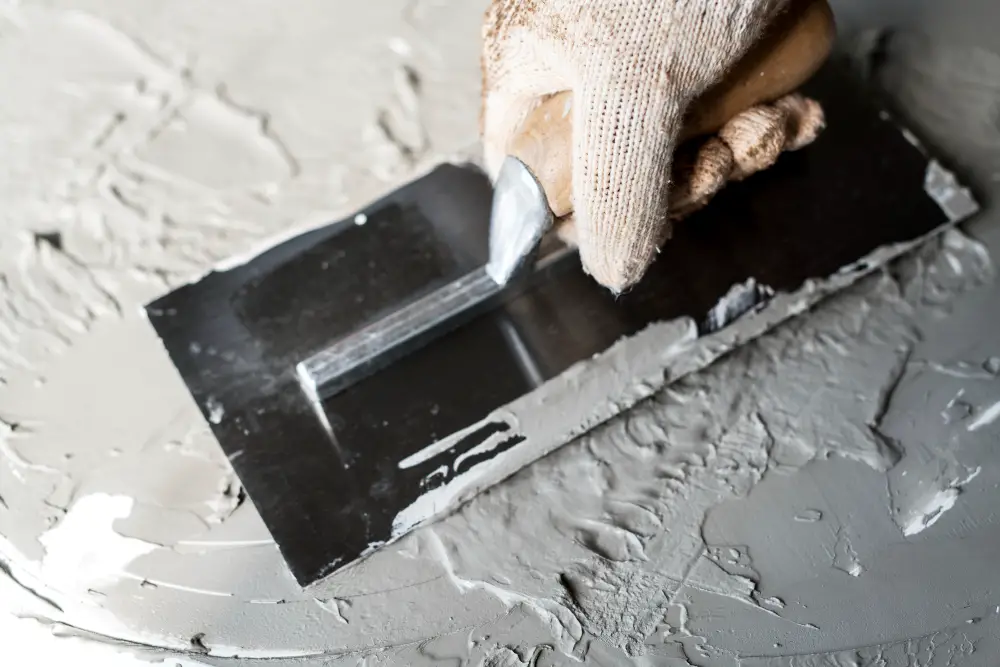
However, there are ways to blend the door seamlessly into the wall texture. One option is to use drywall mud or joint compound to create a smooth surface over the pocket door frame and apply a texture that matches your existing wall finish.
Another option is to install wallpaper that mimics your wall’s texture and color.
Whichever method you choose, ensuring that the finished product looks natural and cohesive with your interior design scheme is essential. You may want to consult an experienced contractor or designer for advice on achieving this look.
Adding Decorative Molding

This technique not only conceals the door but also adds an element of sophistication to your interior design. Depending on your preference and existing decor, you can choose from various styles and designs, such as crown molding or baseboard trim.
You’ll need some basic carpentry skills and tools to add decorative molding around a pocket door. First, measure the dimensions of your pocket door frame accurately so that you can cut the moldings accordingly.
Next, attach them securely using nails or adhesive glue.
You may also want to paint or stain the moldings in a color that matches your walls for a seamless finish. Alternatively, you could opt for contrasting colors if you prefer an eye-catching effect.
Decorative molding is aesthetically pleasing and functional as it helps prevent dust accumulation around doors’ edges while providing additional insulation against noise pollution.
Applying Faux Finishes

You can use techniques like sponging, rag rolling, or stenciling to create a unique look that complements your decor. For instance, if you have a rustic interior design style, you can apply a faux wood grain finish on the door cover material for an authentic touch.
To achieve the best results with faux finishes on pocket doors:
- Choose paint colors that match or contrast with your wall color scheme.
- Use high-quality brushes and rollers for smooth application.
- Experiment with different textures until you find one that suits your taste.
- Allow sufficient drying time between coats of paint or glaze.
With these tips in mind, applying faux finishes is an easy DIY project that anyone can do without breaking the bank.
Selecting Matching Door Handles
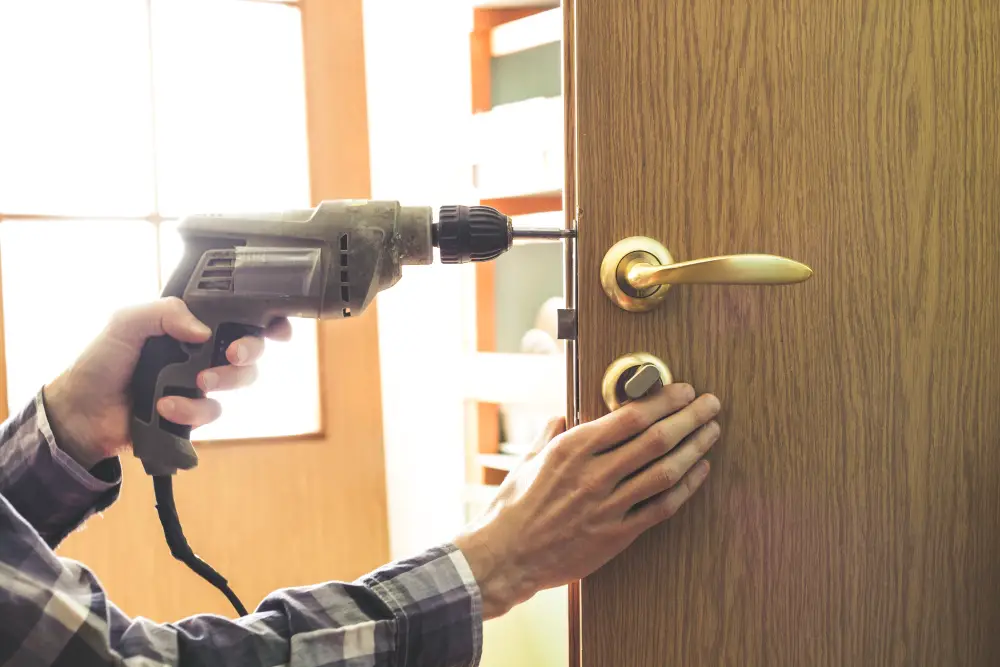
The handle should blend seamlessly with your interior design and not draw attention to itself. Consider choosing a handle that matches your existing hardware or complements other elements in the room, such as light fixtures or furniture.
For instance, consider using a brass pocket door handle for consistency if you have brass doorknobs throughout your home. Alternatively, opt for a simple stainless steel pull if you have modern decor with sleek lines and minimalistic features.
Remember also to choose handles that are easy to grip and operate smoothly without causing any damage or wear on the door frame over time.
Ensuring Smooth Operation
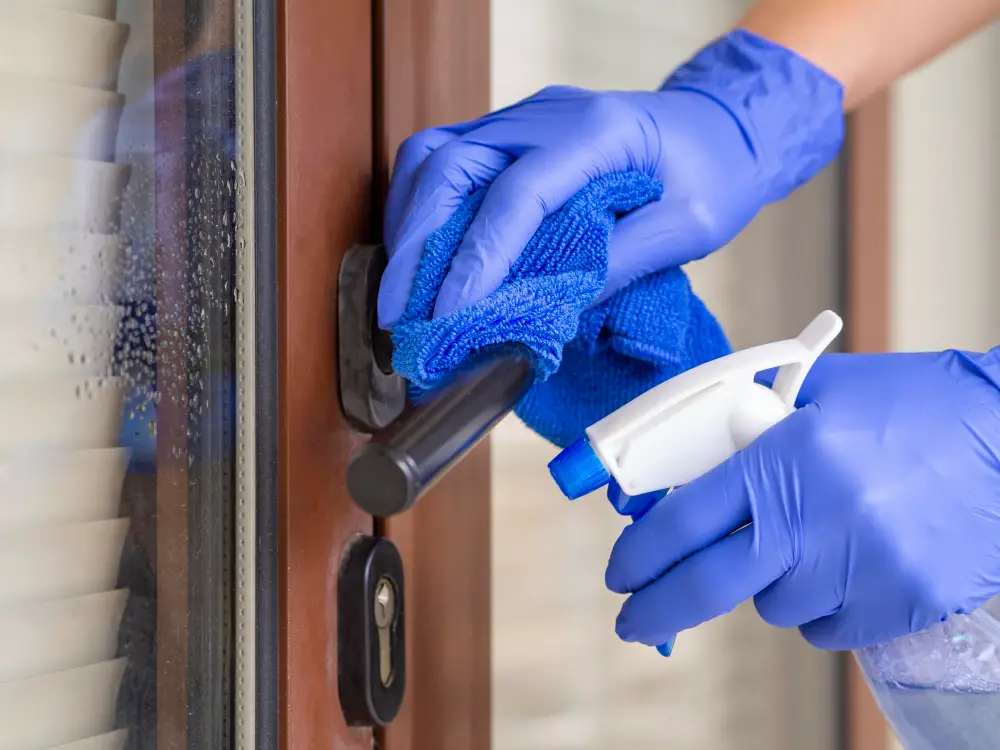
First, ensure the track is level and plumb before installing the door. This will prevent any binding or sticking when opening and closing the door.
Next, lubricate all moving parts with a silicone-based spray or oil to reduce friction and wear on the rollers. Avoid using petroleum-based products as they can attract dust and debris over time.
Regularly clean out any dirt or debris from inside the track to prevent buildup that could impede movement of your pocket doors.
If you notice any issues with an operation, such as difficulty sliding open or closed, inspect for damage in tracks/rollers/hardware immediately so it can be fixed before further damage occurs.
Pocket Door Maintenance Tips
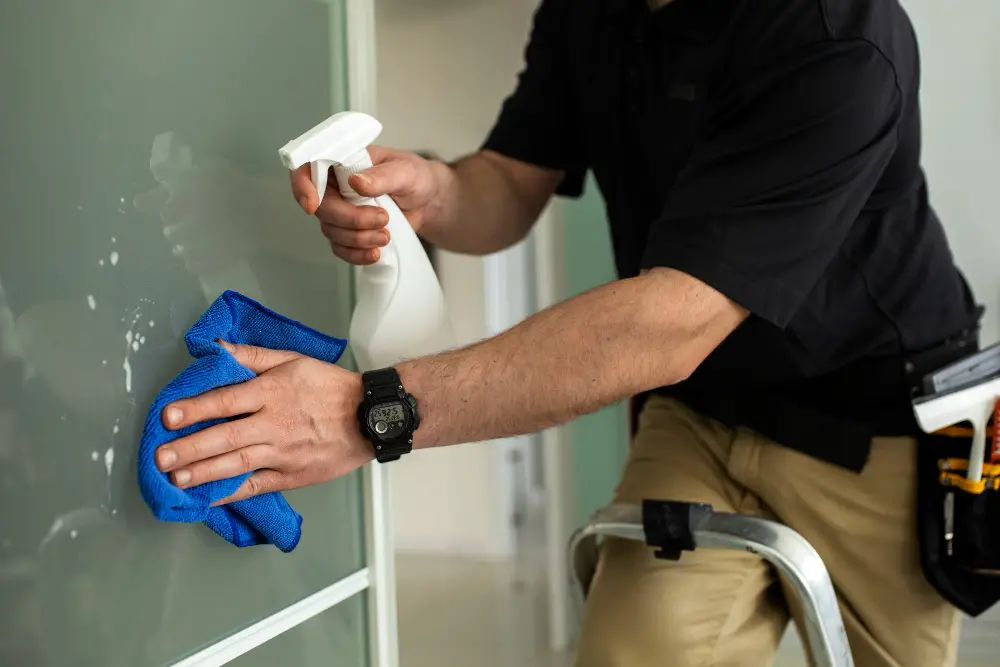
Here are some pocket door maintenance tips to help you keep your sliding doors in top condition.
Firstly, clean the tracks regularly with a soft brush or cloth to remove dirt and debris that can cause friction and impede movement. For optimal performance, lubricate the rollers and tracks with silicone spray or oil-based lubricant every six months.
Thirdly, check for loose screws or bolts on the track system periodically, as these can cause the door panels’ misalignment, leading to difficulty opening/closing them.
Lastly, if you notice any signs of wear, such as cracks on rollers/tracks/door panels, replace them immediately before they become bigger problems.
Maximizing Space Utilization
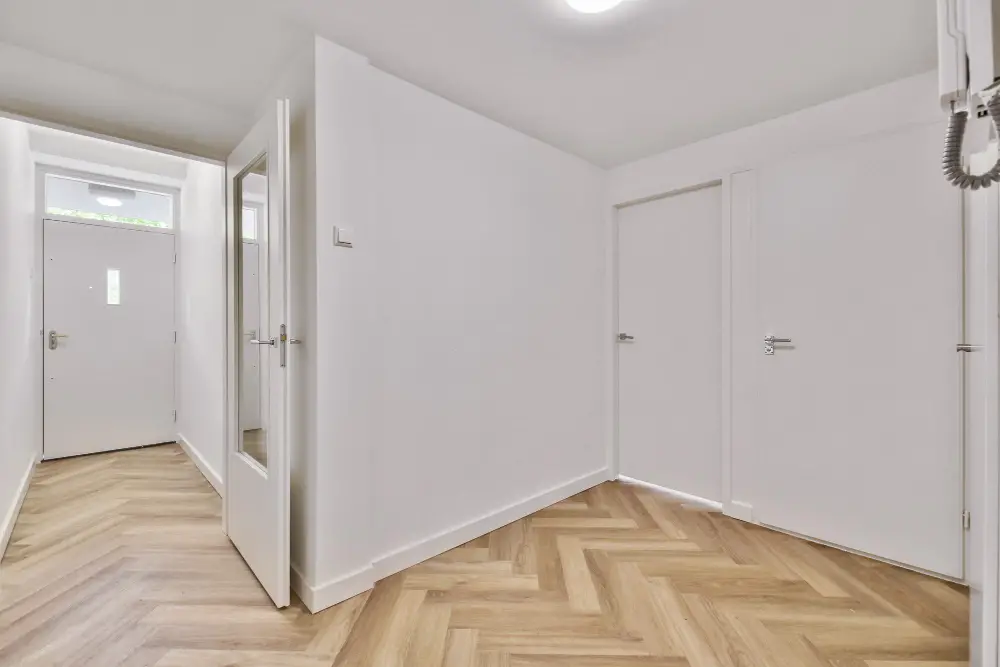
However, you can further maximize your living space by using pocket doors strategically. For instance, you can install a pocket door between your kitchen and dining area to create an open-plan layout when entertaining guests.
Similarly, when working from home, you can use a sliding door to separate your home office from the rest of the house.
Another way to optimize space utilization with pocket doors is by incorporating multi-functional furniture pieces such as Murphy beds or foldable desks that disappear into walls when not in use. This approach allows you to have more floor area for other activities while enjoying all the benefits of extra rooms.
Maximizing space utilization with pocket doors requires careful planning and creativity, but functionality and aesthetics are worth it.
Troubleshooting Common Pocket Door Issues

One common problem is the door getting stuck or not sliding smoothly along the track. This could be due to debris buildup in the track or worn-out rollers and guides.
To fix this issue, clean out any dirt or debris from the tracks and lubricate them with silicone spray to ensure smooth operation.
Another issue is when pocket doors come off their tracks altogether. This could happen if there’s too much weight on one side of the door, causing it to tilt and fall off its rollers.
To prevent this from happening, make sure you distribute weight evenly on both sides of your pocket door.
Lastly, some homeowners may experience difficulty locking their pocket doors securely in place due to misaligned latches or damaged locks. In such cases, it’s best to consult a professional locksmith who can repair or replace faulty hardware components for optimal security.
By following these simple tips for troubleshooting common pocket door issues like sticking/sliding problems; falling off-track; and lock/latch malfunctions – you’ll be able to enjoy all of your home’s benefits without any hassle!.
FAQ
How do you find hidden pocket doors?
To find hidden pocket doors, search for walls or door jambs that are wider than others, and check for thin door stops covering the pocket door opening, especially in traditional homes with separate dining rooms.
Can I install a pocket door without removing the drywall?
Answer: You can install a pocket door without removing drywall by lifting the door off the sliding track and removing the trim around the door.
Can you mount anything on a pocket door wall?
Answer: You can mount items on a pocket door wall using adhesive-backed wall hangers, which are easily removable and can hold up to 20 pounds, rather than nails or drywall anchors that may damage the door or hinder its sliding function.
What are the best materials and techniques to conceal a pocket door effectively?
The best materials and techniques to effectively conceal a pocket door include utilizing matching wall surface materials, paint, or wallpaper and maintaining consistent design elements.
What factors should be considered when hiding a pocket door in an existing structure?
When hiding a pocket door in an existing structure, consider available space, wall construction, door specifications, and the necessary hardware.
Are there any specific design ideas or features that can help blend a pocket door seamlessly with the surrounding walls?
To seamlessly blend a pocket door with the surrounding walls, incorporate hidden tracks, matching wall materials, and flush handles or touch latches.




